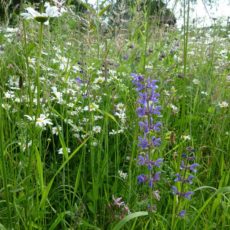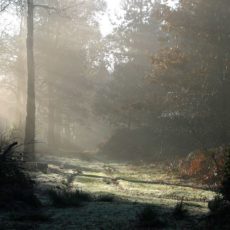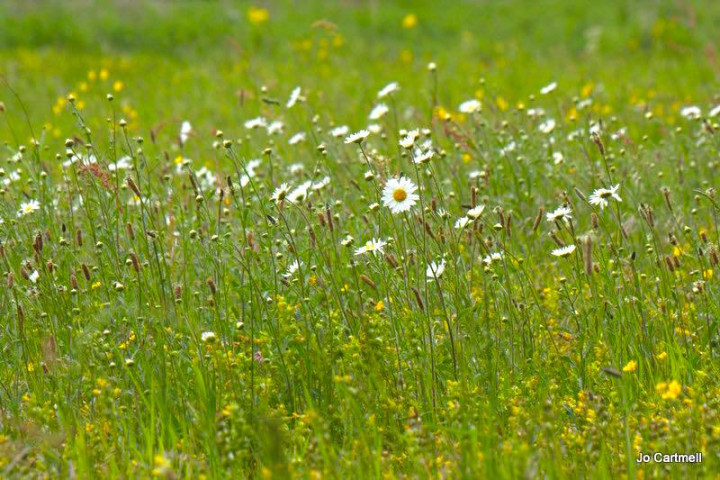Guest post by John Aitchison
From a presentation given for New Networks for Nature’s ‘Nature Matters’ event in Stamford, England, November 2015
For more than twenty years I have lived by the sea in Scotland. My children have grown up with otters as their neighbours and, more recently, with re-introduced white tailed eagles too. They’re as pleased to see them as when they bump into their friends, which is just as it should be. It’s a place we feel we belong.
To walk on that shoreline is to play back some of our own history: one rock makes me smile at the memory of a picnic we had there, when my daughter found a long heron’s feather and put it in her hair. In another place I stand again where I once did at midnight, after heavy snow, entranced by the full moon that lit up the land as far as I could see. Sometimes I go again to where I watched an otter sleeping, twitching its paws and its whiskers as it dreamed.
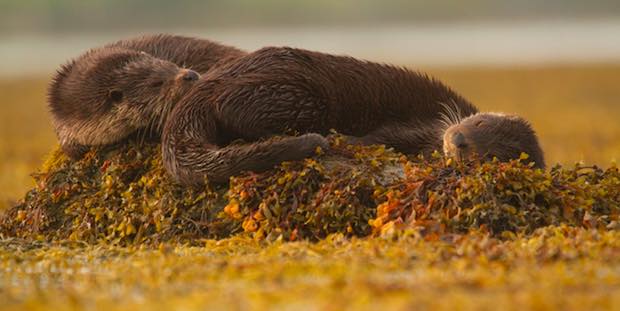
They’re small things, each of them, but they make life worth living.
There’s an old, deep satisfaction in learning the patterns of a place and their meanings: the visual patterns, like the growing shapes of trees and lichen – and patterns in time, of the tides and the seasons, and of animal behavior. Slowly they build a sense of what will happen next, and with that comes the delight of realising that there will always be surprises – for instance when a whooper swan decides to stay for the summer and builds a nest.
There is also the joy of coming to know animals as individuals, with their own personalities, and the possibility that any one of them might lift your mood, and stop you worrying about the future, by taking you out of yourself and making you gasp, or smile. ‘Walking solves it’, the Romans used to say – and I would add, ‘the more so if you see a bird’.
The writer Helen Macdonald says that there’s magic in places you know really well, and there’s magic too in what might yet happen there, while there are still animals to sharpen our senses, and give us reasons to look harder, to intensify the colours, and the sounds and the smells. Even if I don’t see an otter as I walk on that shore, the possibility that I might means that I notice many other things.
Spending time like this forges deep attachments. I think of my neighbour, Catherine, who died a few years ago. She was a solitary lady who loved her home and its wild animals. On the way to the hospital she asked to be driven the long way round, so she could look back for the last time at the hills and the shore where she belonged.
We also belong to something larger than the places we know best, to a community of living things that’s more diverse and fascinating, and more humblingly complicated and beautiful, than we can possibly imagine. My community at home includes the curlews I can hear from my room, and the Greenland white-fronts that fly over the house on their way from their roost to the fields, to feed. It has less obvious members too, like the plants and animals on the seabed, which I know are being mangled by the boats dredging for scallops or prawns offshore. Increasingly it includes animals that live further afield, the animals I have been asked to film all over the world.
We also belong to something larger than the places we know best, to a community of living things that’s more diverse and fascinating, and more humblingly complicated and beautiful, than we can possibly imagine.
One of the most important things that we’ll discuss at this event is how to communicate about conservation. As a filmmaker, it’s a subject close to my heart. As I see it, our challenge is to convey the truth that we all belong to one community and that that includes wild animals. We need to make people feel as though they are old friends, even though they haven’t seen them first-hand, and that their local patches, their homes, are just extensions of our own: that they are as deserving of our care as our neighbours are.
What does it mean to belong?
Long is an old word. Originally it meant an extension of something, hence to be-long was to be connected or dependent. Kinship and loyalty were two of its synonyms.
We heard last night from Germaine Greer, about the exotic animals and plants that do not belong in Australia, and I expect we might also hear from George Monbiot about the animals that should belong in this country, like the beavers, lynx and wolves that used to live here and could do so again.
In the 14th century belonging acquired its other meaning, as property. From a conservation viewpoint that’s when the problems with belonging began.
Germaine has written and spoken about this too, about the rights that ownership confers to change the land. This question, of what should be permissible when people own a place and its animals and plants, is at the heart of conservation.
So belonging contains two very different ways of looking at the natural world: as someone’s property, that can be bought and sold for their benefit, and as something that’s beyond price, that sustains us and unites us with every other living thing: something to which we all belong. When we are communicating about conservation, and trying to persuade people to change how they behave, we may have to choose between these meanings.
I have been filming in Kenya recently and there I saw a sticker for an anti-poaching campaign. It said, ‘Hands off our elephants’. Our elephants. Perhaps the best way to persuade people to act is to suggest that they should ‘take ownership’ of the elephants that are being killed for their ivory. The logical next step would be to declare that the elephants belong to everyone, but this is harder of course, since that would include the poachers and the people buying the ivory too: they may even be in the majority. The hardest task is to persuade people that elephants belong to no-one, yet are still worthy of respect in their own right. For that to work people have to really know and like elephants. This matters because it’s not sufficient to just leave elephants alone. We need to care enough to actively protect them, or without a doubt they’ll soon be gone.
In the last forty years the number of individuals of all the world’s mammals, birds, fish and reptiles has been halved (and that’s an average – it’s three quarters if you look just at life in freshwater). Half the life in the sea has gone as well and closer to home, since the mid 1960s, 22 million fewer pairs of birds now nest in the UK – that’s more than a fifth of our breeding birds lost since I was born. In the same time the human population has more than doubled, from 3.3 to 7.3 thousand million.
There are stark warnings in these figures. Under pressure from us the world’s natural systems are breaking down. Somehow we have to persuade people that the Earth and its animals and plants do not belong to us, that in fact it’s the other way round – we belong to, and are part of, and are dependent on the Earth.
Knowing this I see new layers of meaning everywhere. I travel for my work but now I cannot look at airports or aircraft with anything but guilt and pain. Petrol stations are no longer just shops for fuel – I loathe them for the effect that burning their fuel is having on the climate. I can’t look neutrally at the lush uniformity of most farms, sprayed and lifeless, or at heather moorland, where grouse are shot and hen harriers too.
I do not trust our politicians to do the right thing. Very few of those capable of being elected seem to see the urgent need to protect wildlife, or restore wild places. Our leaders are rushing in the opposite direction, sacrificing the natural world to pay our bills. ‘We’re not going to save the planet by putting our country out of business’, says the Chancellor of the Exchequer. But Mr. Osborne, you have that back to front.
Individuals struggle to be heard, especially when they are pointing out truths that others don’t want us to hear, but we can alter these things by choosing how we spend our money and by banding together to demand change. We must persuade others to join in: our spouses, our grandchildren, our colleagues and friends, as well as our leaders.
To make a difference we need to catch people’s attention, by being inventive, creative, amusing and confrontational, so others will want to share what we show them with their friends. With social media it has never been easier to circulate information, unfiltered by partial news channels and the money-people. For an example of how effective this can be, just think of how one film, Blackfish, has created an online storm about the cruel keeping of orcas in captivity.
So, given the urgency, is the only thing worth doing to raise our voices and campaign as vigorously as we can? We must certainly do that, but I think we must also celebrate nature, and this is why:
In 2008, for the first time, more than half of all the world’s people were living in towns and cities. 100 years earlier it was only one in seven. Most people are no longer in touch with nature and, as Helen MacDonald says, ‘the rarer animals become, the fewer meanings they can have’. No one will care enough to make uncomfortable choices in favour of elephants or albatrosses unless they know enough to care about them. She also asks,‘how can you love something, how can you fight to protect it, when all it means is loss?’ And again she is right. We must propose solutions as well as highlighting problems, and we must show that nature is wonderful, and why it matters.
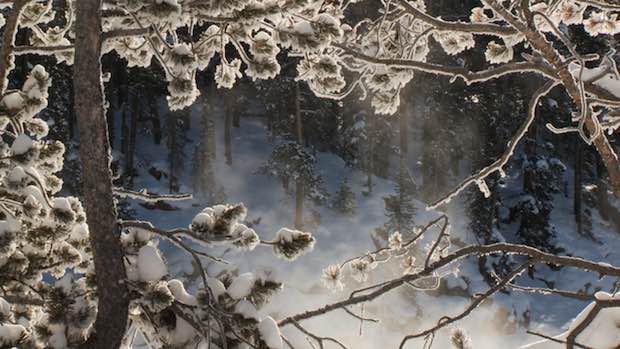
As creative people, as naturalists, as researchers, it is our task to restore that lost contact, to help people know and to help them care. And that’s the point of this event isn’t it? To share ideas, to inspire and motivate each other? That’s certainly why I’ve come. So if you write, or photograph, or paint, or sculpt, or discover new truths in science, then please use your skills to convey why nature matters to us all. If you have other skills, at work or at home: of persuading people to change their minds, of organising events or building teams, or taking kids outside and having fun – especially that! – then do it for conservation too. And which of us cannot write one letter a day, as Ansel Adams did – for conservation.
We have an obligation to look after this place that we all share, and I am sure that most people would want to, if they were to really feel that it’s where they belong. As filmmakers, as writers and poets, artists and scientists, we can do that – by transporting people to the wild places and into other lives.
John Aitchison is a wildlife filmmaker and author of the book The Shark and the Albatross: Adventures of a wildlife film-maker published October 2015 in the UK. Find him on Twitter at @JohnAitchison1.
Article originally published on the New Networks for Nature website.

